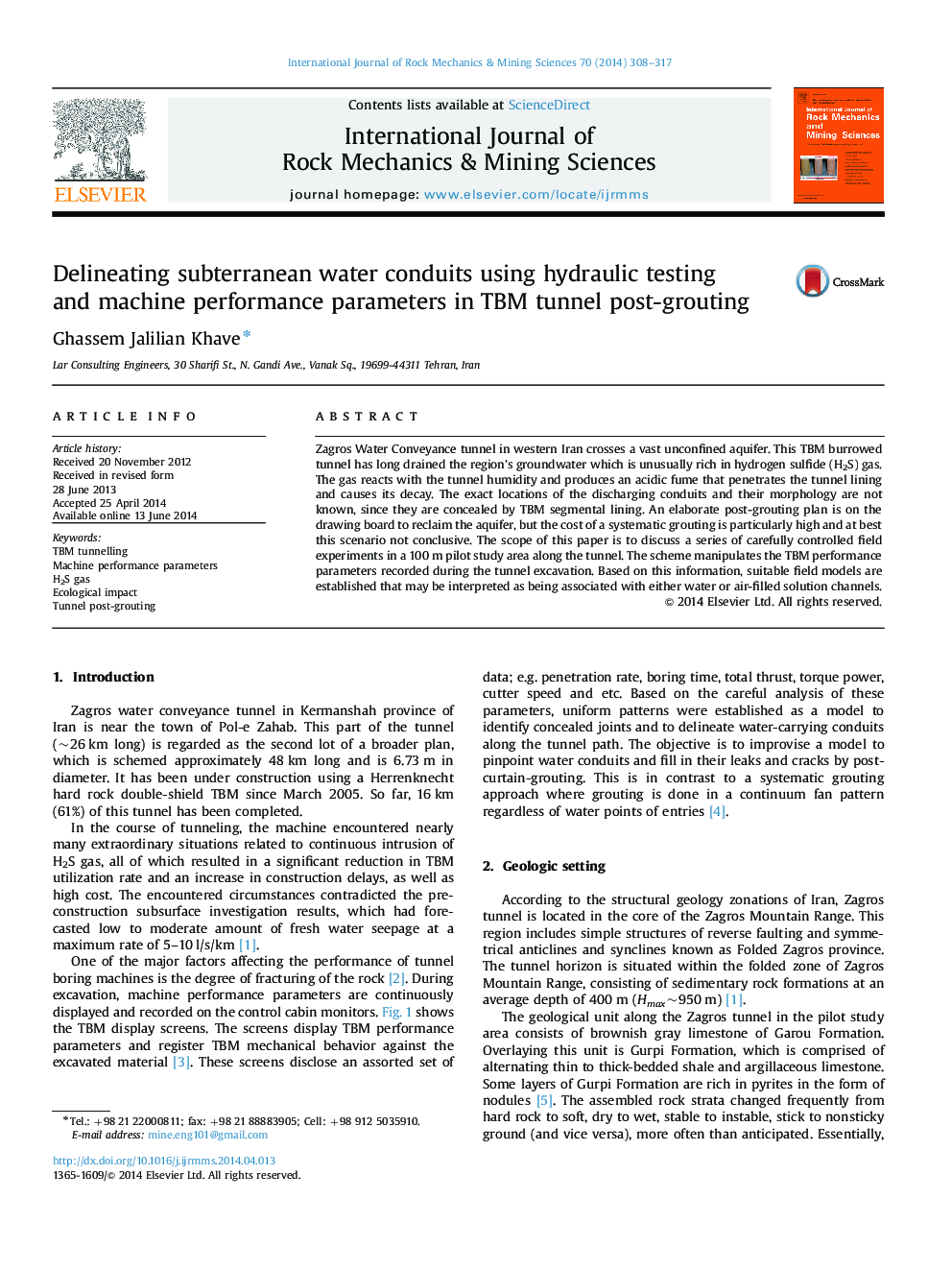| کد مقاله | کد نشریه | سال انتشار | مقاله انگلیسی | نسخه تمام متن |
|---|---|---|---|---|
| 809104 | 1468699 | 2014 | 10 صفحه PDF | دانلود رایگان |

• A post-grouting model in mechanized tunnelling using hydraulic testing and machine performance parameters is proposed.
• The model relies on the effect of joints on TBM penetration rate and cutter-head torque power.
• Strict control of optimum angle of incidence between injection holes and dominant joints should be used.
• This model was successfully utilized in a 100m pilot study area along Zagros tunnel in western Iran.
Zagros Water Conveyance tunnel in western Iran crosses a vast unconfined aquifer. This TBM burrowed tunnel has long drained the region’s groundwater which is unusually rich in hydrogen sulfide (H2S) gas. The gas reacts with the tunnel humidity and produces an acidic fume that penetrates the tunnel lining and causes its decay. The exact locations of the discharging conduits and their morphology are not known, since they are concealed by TBM segmental lining. An elaborate post-grouting plan is on the drawing board to reclaim the aquifer, but the cost of a systematic grouting is particularly high and at best this scenario not conclusive. The scope of this paper is to discuss a series of carefully controlled field experiments in a 100 m pilot study area along the tunnel. The scheme manipulates the TBM performance parameters recorded during the tunnel excavation. Based on this information, suitable field models are established that may be interpreted as being associated with either water or air-filled solution channels.
Journal: International Journal of Rock Mechanics and Mining Sciences - Volume 70, September 2014, Pages 308–317